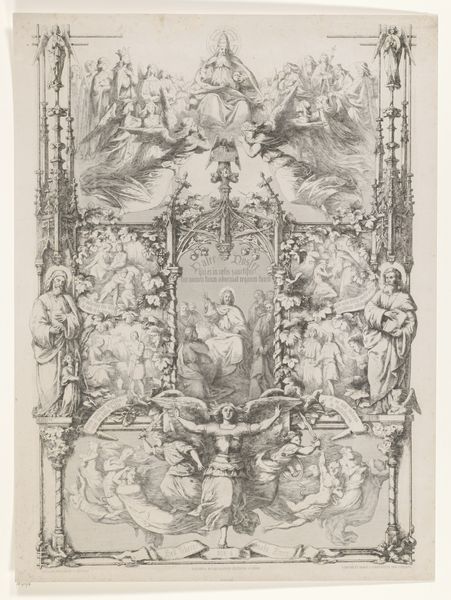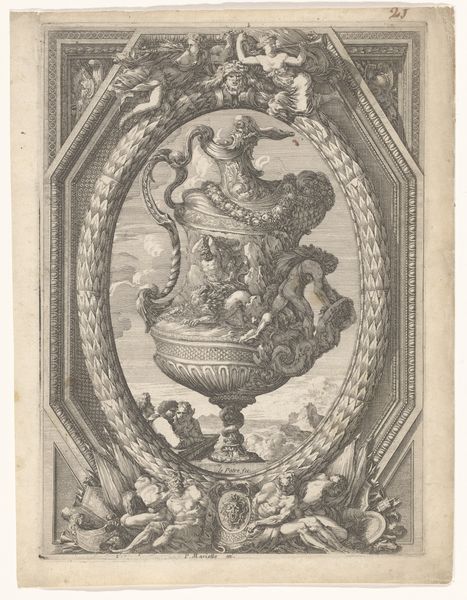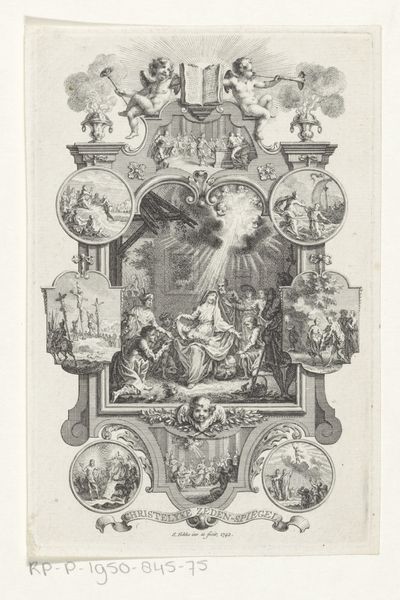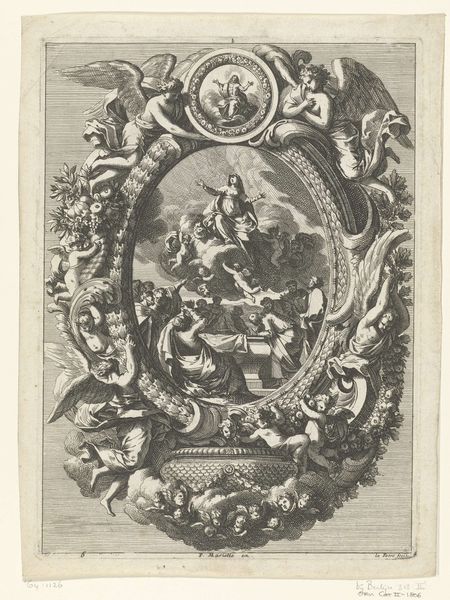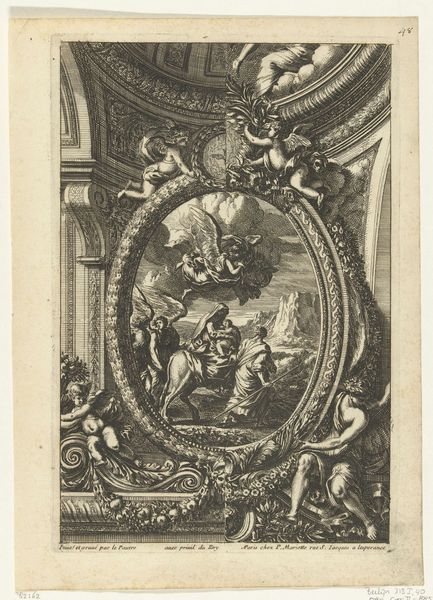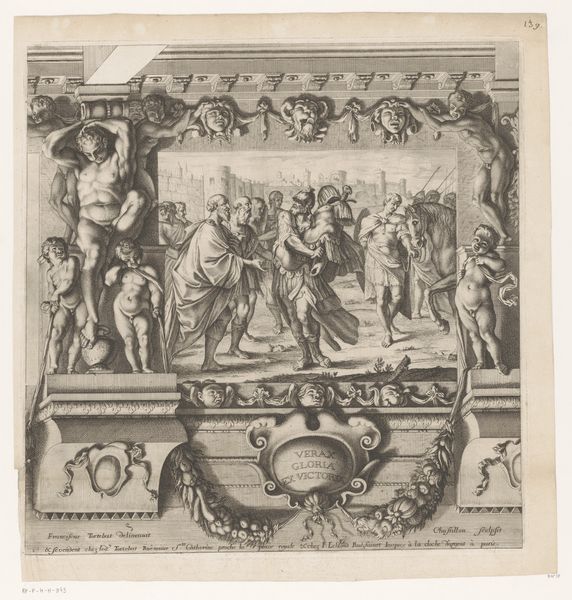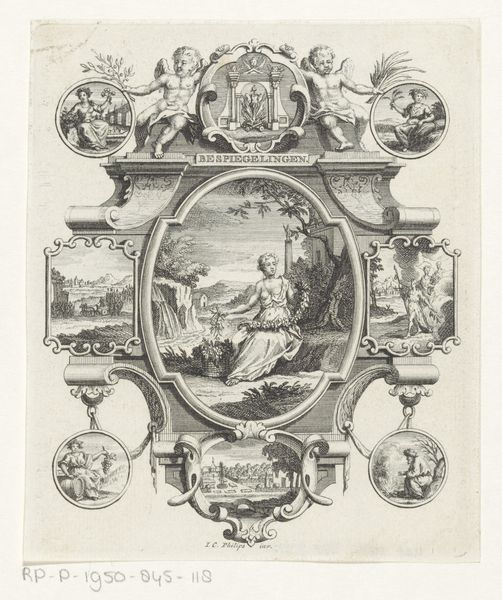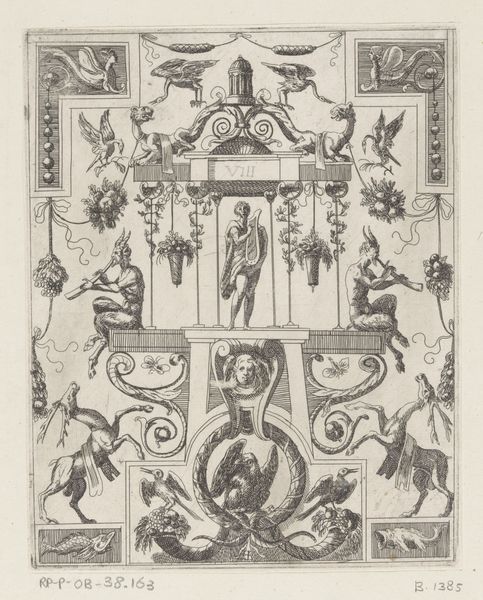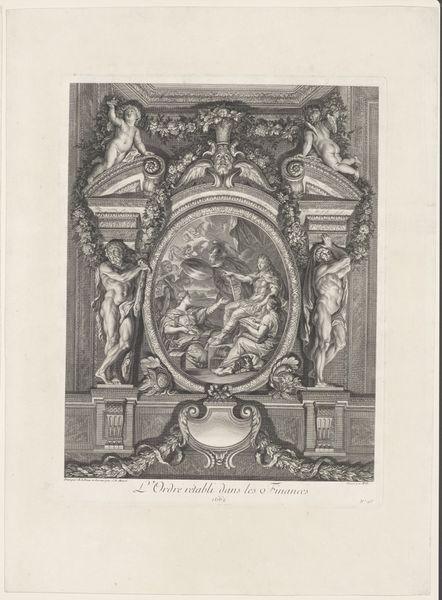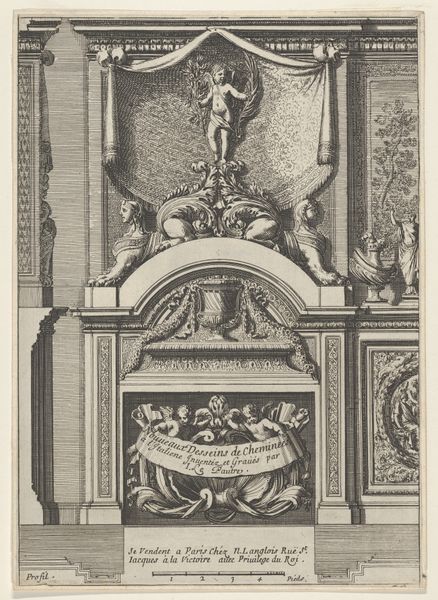
print, etching, engraving
#
baroque
# print
#
etching
#
old engraving style
#
history-painting
#
engraving
Dimensions: height 459 mm, width 330 mm
Copyright: Rijks Museum: Open Domain
Editor: Here we have Louis de Châtillon's "Reconciliation between the Romans and the Sabines" from 1659, made with etching and engraving. It's got this overwhelming density to it, almost claustrophobic in the sheer amount of figures crammed into the scene. What strikes you when you look at this? Curator: I'm drawn to the way Châtillon utilizes the print medium to disseminate this historical narrative. Prints democratize images, making them accessible beyond the elite. Consider the labor involved in producing these engravings; the meticulous detail achieved through repetitive, physical work. How does that inform your understanding of its message? Editor: That's fascinating, I hadn’t thought about the print's availability and the physical process involved. Does the "old engraving style" relate to the history it tells, almost reinforcing a classicizing perspective on history and war? Curator: Absolutely. The artist deliberately chooses a medium that mimics the style of classical engravings, evoking a sense of historical legitimacy. Consider the material value of the print versus, say, a painting. Is Châtillon challenging traditional notions of "high art" by embracing this readily reproducible medium? Also, what is the effect of text inscription at the bottom of the print within the narrative frame? Editor: So, is he saying something about the art world itself, making this affordable history? I'm also seeing all these grotesque masks within the decorative architectural framework…they have a life of their own. Curator: Precisely! These theatrical masks draw attention to performance of power itself, or the very "stage" where these historical narratives play out through the agency of making. Think of the circulation of this print in 17th century and it audience - that creates social and cultural meaning too! Editor: So, the print itself becomes a tool, disseminating this version of history and commenting on its own production at the same time. I’m going to pay much closer attention to the "how" next time I visit the Prints and Drawings room! Curator: Indeed! By examining the means of production, we unlock a deeper understanding of its cultural significance, its meaning goes beyond the single image itself.
Comments
No comments
Be the first to comment and join the conversation on the ultimate creative platform.
